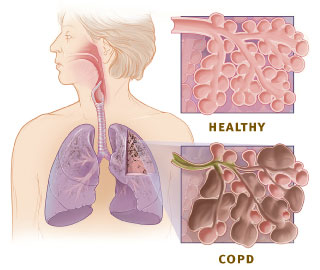Ebola,
name of a river in the Democratic Republic of Congo, in the bank of
which people of a village were affected from a type of haemorrhagic
fever in 1976, inadvertently got coined its' name with the disease
that claimed many deaths. Simultaneously, another outbreak was also
detected in Nzara, Sudan.
| English: Ebola virus virion. Created by CDC microbiologist Cynthia Goldsmith, this colorized transmission electron micrograph (TEM) revealed some of the ultrastructural morphology displayed by an Ebola virus virion. (Photo credit: Wikipedia) |
The current outbreak
in west Africa, starting in Guinea (first cases notified in March
2014), is the largest and most complex Ebola outbreak since the Ebola
virus was first discovered in 1976.
The virus belongs to
the family of Filoviridae that includes 3 genera:
- Cuevavirus,
- Marburgvirus, and
- Ebolavirus.
There are 5 species
that have been identified and named after the places of discoveries:
- Zaire,
- Bundibugyo,
- Sudan,
- Reston and
- Taï Forest;
The first 3,
Bundibugyo ebolavirus, Zaire ebolavirus, and Sudan ebolavirus have
been associated with large outbreaks in Africa. The virus causing the
2014 west African outbreak belongs to the Zaire species.
Unlike some other
viruses, such as influenza
or SARS,
Ebola virus is not spread through the air, which has been questioned
recently; there has been a theoretical possibility at least.
It is not spread by
water or through mosquitoes or other insects. Ebola can be spread
from person to person only while the infected person is displaying
symptoms. The incubation period ranges from 2 to 21 days; in an
average of 8 to 10 days.
It appears that the first victim of the current Ebola outbreak in
West Africa was a 2-year old boy in South-eastern Guinea, possibility
coming in contact with droppings from infected bats, died in December
of 2013, followed by the deaths of several members of his family.
Human
to human transmission may be possible coming direct contact with
saliva, semen, sweat, tears, vomits, vaginal fluid, feces, blood and
used belongings of the patient; through mucus membranes of eye and
mouth; through broken skin.
The virus has been isolated from semen, saliva, tears, sweat,
urine, vomits, vaginal fluid and faeces of convalescent EVD patients
for several days, through RT-PCR (Reverse Transcription Polymerase
Chain Reaction) test for RNA.
The maximum recorded persistence of Ebola virus RNA in the blood
and other body fluids of convalescent EVD patients varies by fluid
type. Across combined studies (each study did not examine the exact
same fluid types at the same time points), Ebola virus RNA has been
detected up to 101 days after symptom onset in semen, 33 days from
vaginal swabs, 29 days from rectal, 23 days from urine, 22 days from
conjunctival swabs, 21 days in blood, 15 days in breast milk, eight
days in saliva, and six days on skin.
Though multiple studies have shown that Ebola virus can persist in
semen for longer than in blood or other body fluids, sexual
transmission of Ebola has not been definitively established.
EVD among healthcare personnel and other persons is associated
with direct contact with infected persons (or the bodies of persons
who have died from EVD) and direct contact with body fluids from EVD
patients.
CDC infection control recommendations for U.S. hospitals,
including recommendations for standard, contact, and droplet
precautions for general care, reflect the established routes for
human-to-human transmission of EVD and are based on data collected
from previous EVD outbreaks in Africa in addition to experimental
data.
Airborne transmission of EVD among humans has never been
demonstrated in investigations that have described human-to-human
transmission although hypothetical concerns about airborne
transmission of EVD have been raised.
ZMapp,
a combination of three monoclonal antibodies that bind to Ebola, has
been used experimentally on a few patients, and it stopped the virus
in animal trials. Blood transfusion from survivors are being tried
and some positive results have been obtained.
Best of preventive nursing care (Barrier Nursing) is the key to
prevent the spread of the disease.
Related articles
...
Click here to Subscribe news feed from "Clinicianonnet; so that you do not miss out anything that can be valuable to you !!
...






